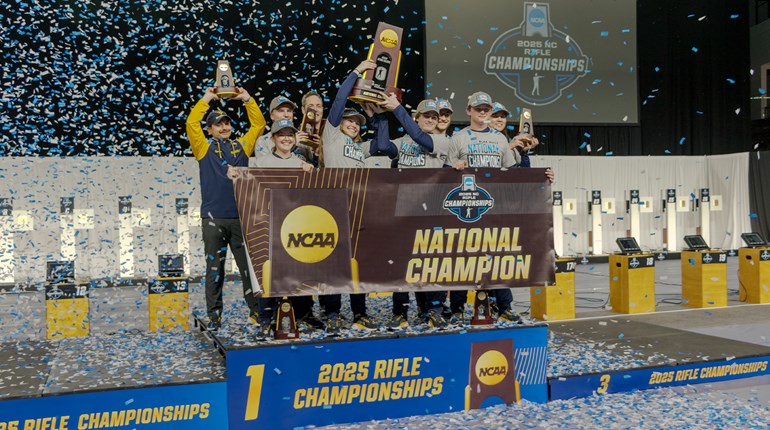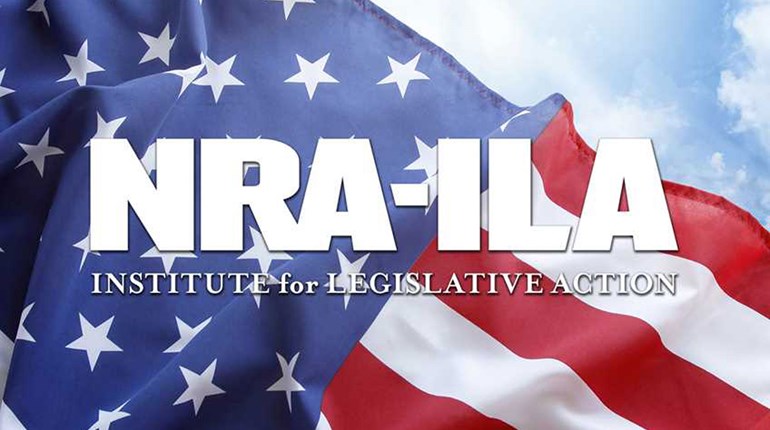
The below is an excerpt from the 1978 book, Olympic Shooting, written by Col. Jim Crossman and published by the NRA. Read Part 1 and Part 2.
1952—Helsinki: The Soviet Shooters Arrive (Part 3)
By Colonel Jim Crossman
Following a series of preliminary shoots around the country, the final shoulder-to-shoulder tryout was held at Fort Sheridan. The U.S. Olympic hopes were finally settled on the shoulders of:
- Frank T. Parsons, Jr., Chevy Chase, Md.
- Col. Charles G. Rau, USA, Executive Officer, Arlington, Va.
- Maj. George E. Leppig, Adjutant, Cleveland Heights, Ohio
- Huelet L. Benner, Canal Zone, Panama
- Arthur C. Jackson, Brooklyn, N.Y.
- William W. McMillan, Quantico, Va.
- Robert K. Sandager, Minneapolis, Minn.
- Emmet O. Swanson, Minneapolis, Minn.
- Harry W. Reeves, Detroit, Mich.
This was a tough team. Frank Parsons, the team captain, will be remembered as having shot on the 1948 team and on international teams in 1930, 1948 and 1949. Of the shooters, Joe Benner, Art Jackson and Doc Swanson had all been four-time U.S. pistol champions, and had shot on the 1949 U.S. World Championship team. Bob Sandager was also an experienced shooter. Three years before, Bill McMillan, on duty with the Marine Corps at the Brooklyn Navy Yard, had to walk the only guard post calling for a rifle, because he had not qualified with the pistol. But when he learned, he learned fast and here he was on his way to Finland, one of six shooters with the American Olympic team.
The Amateur Trapshooting Association had elected not to enter a team in the clay pigeon match. American trapshooting differed markedly from the Olympic style, and the Olympic or International game was not shot in this country. In fact, at that time there was not a single trap field in the country capable of throwing the international style. Even at this writing, many years later, there are international fields at only a handful of locations.
While the rifle team, as in the past, was picked by a committee of experienced NRA shooters, the pistol committee was composed of three members representing the NRA and three representing the U.S. Revolver Association, although sometimes it was hard to sort out which was which as many shooters belonged to both organizations. While the rules permitted eight shooters, two for each gun, there were only six U.S. shooters. Benner won the right to shoot in both the free pistol and the rapid-fire pistol events, while Swanson was to shoot both the 300-meter and the 50-meter rifle events.
The Olympic team, plus some additional shooters, composed the U.S. team that was sent to the UIT matches in Oslo just prior to the start of the Olympics. Eighteen days of shooting in Norway put them in good shape for Helsinki, where they had only four days to get acquainted with the range and the shooting conditions.
In the clay pigeon, with no American shooters, George Genereux duplicated Canada's 1908 victory by winning the gold medal, with Holmqvist and Liljedahl of Sweden right on his heels. The Soviet entries were 10th and 15th. The running deer match over that new 100-shot course was won by Norwegian Larsen, with Skoldberg of Sweden and Maki of Finland following. Again there was no U.S. entry, and the Soviets were in seventh and eighth places.
At the end of the first day there were tears and cheers.
The rapid-fire pistol match was shot over two days, 30 shots of the 60-shot course being fired each day. At the end of the first day there were tears and cheers.
The tears were for Benner; he had let one shot get away from him for a miss. It was certain that there would be many people who would finish the match with all 60 hits and with only 59 hits Joe was definitely out of the running.
Cheers, on the other hand, were for Bill McMillan. In his first day of Olympic shooting, he was leading the pack with 290. On the next day, following a hassle over a possible late shot and an alibi string, he dropped well below his average to an 89 for one string, ending with 575 for seventh place.
The match winner was the Hungarian, Karoly Takacs, with 579; he was followed by teammate Kun and Romanian Lichiardopol, each with 578. The Russian entries were in eighth and 11th places. Benner's 572 put him in 34th place, where he was outranked by 24 scores of less value but with 60 hits.
In the 300-meter match, both Sandager and Swanson shot foreign guns, the Schultz-Larson Danish bolt-action free rifle with a thumb-hole stock. Both used 6.5 mm factory ammunition, although most of the top shooters in the match used a 7.5 mm short cartridge. At one time the Martini action had been the standard for the 300-meter event but by now all the top shooters had switched to the bolt gun.
The Russians used a rifle of their own design with the sights offset about a half-inch to the left. While Swanson was having his troubles in this match, including an accidental discharge (which gets scored as a miss), Bob Sandager was busy setting a new American record of 1104. But alas, 1104 was not enough in this match, and there were five other shooters with better scores. Bogdanov with 1123 and Weinstein with 1109 upheld the Soviet honor for first and third places. Burchler of Switzerland, shooting next to Bogdanov, was second with 1120. There were some who thought the Swiss would have won except for a small thing. In offhand, he was standing well forward and being severely buffeted by the muzzle blast from Bogdanov's rifle. If he had stepped back to avoid the worst of the muzzle blast, his wide shots might not have been quite so wide.
Sarbu, the Romanian, and Andrejev, the Russian, were consistent in the smallbore prone match, making 100 on each of the four targets, giving them the gold and silver medals. Art Jackson leaked one out for a 399 and a bronze medal. Swanson was consistent, too, but with four 99s, good for only 21st place. The other Russian was 24th with 395.
As the kneeling and standing scores were added to the prone score to make the 3-position match, Kongshaug of Norway and Ylonen of Finland added enough to their 397 prone scores to place first and second, both with 1164. Andrejev picked up a bronze medal, one point behind the first two, with his teammate Avilov in fifth. Jackson and Swanson both had 1155 for 12th and 13th.
… It had been 32 years since this event had last been by an American...
Joe Benner had been unhappy in the free pistol match in 1948. He had tied for second place but had been pushed out of the medals to fourth by the tie-breaking procedure. In 1952, it soon became evident that he would again be in trouble if he shot into a tie, because he had dropped one of his early shots out into the white. One of the methods of settling ties was to count the shots in the white. Benner made sure this would not happen to him again by shooting some great 10-shot scores, ending with a clear three points over Leon of Spain and four points over Balogh of Hungary. Harry Reeves had a bad day and was among the also-rans, while the Russian entries were in fourth and fifth places.
Benner's victory was all the more sweet as it was the only gold shooting medal for the United States in 1952 and it had been 32 years since this event had last been won by an American—Karl Frederick.
Aside from Benner's win and Art Jackson's bronze medal in the smallbore prone, the Americans did not cover themselves with too much glory. But the Russians, for the first time in the Olympics since World War I, did well by themselves: a gold medal, a silver medal and two bronze medals.

Photo: Olympic tryouts in 1952 brought together three outstanding handgunners: Harry Reeves, Joe Benner and Walter Walsh. Benner and Reeves made the team, Walsh later served as the captain of the 1972 shooting team. Photo from NRA Archives.
Read more: Tin Cans and The National Matches—1921


































